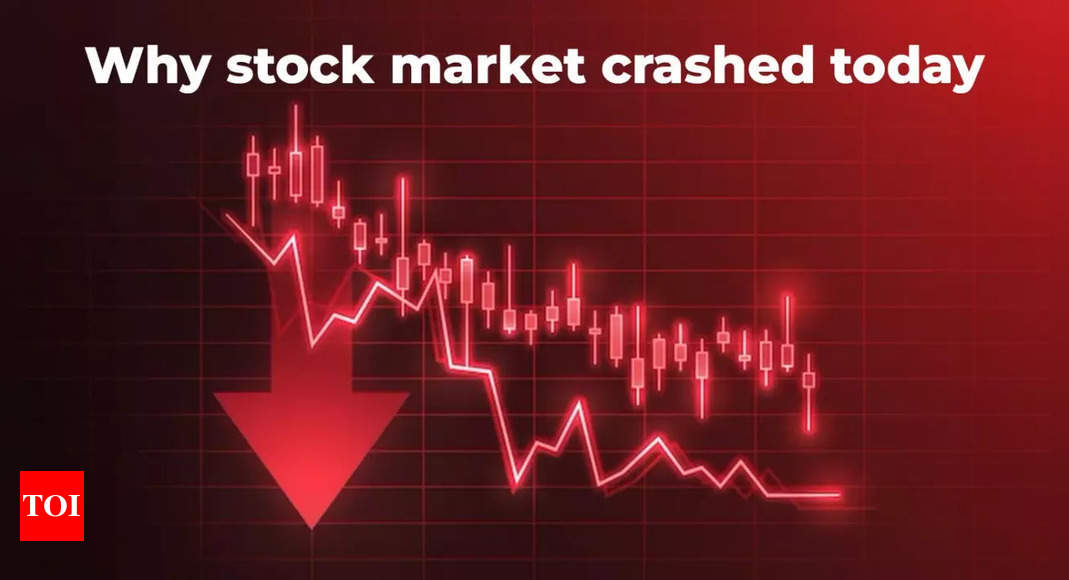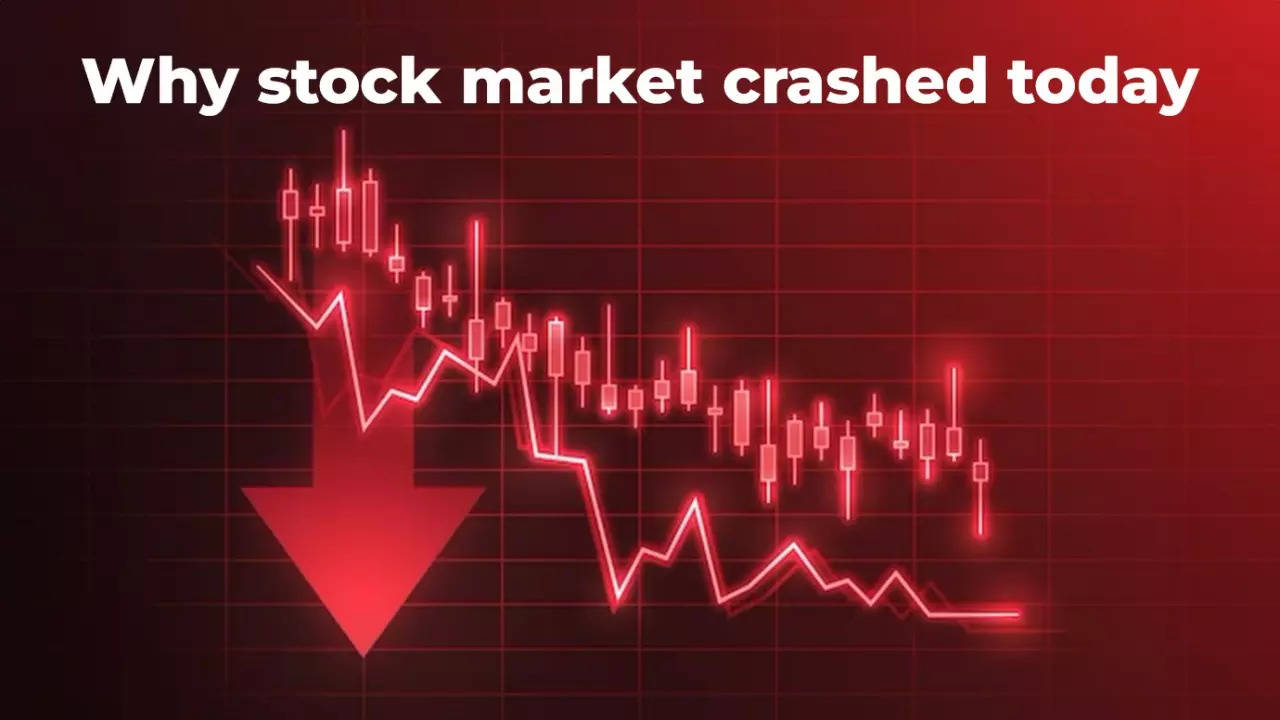Stock market crash today: Reasons why Sensex crashed over 900 points, Nifty50 plunged in just 3 hours | India Business News
At the closing, BSE Sensex was down 930 points or 1.30% at 70,506.31.Nifty50 was at 21,150.15, down over 300 points or 1.41%.
The abrupt shift in market sentiment took participants by surprise, especially given the positive global and domestic cues. Nikkei 225 in Japan traded higher by 1.5%, FTSE 100 in London rose by 1%. US bond yields fell significantly, and Brent crude oil prices remained below $80.
Valuation parameters and technical indicators suggest a forthcoming consolidation post a continuous rally, feel experts. We take a look at 5 possible reasons why the BSE Sensex, Nifty50 tanked today:
1. Sanjeev Hota, Head of Research at Sharekhan by BNP Paribas told TOI that the steep fall in the market across indices was primarily led by profit booking at higher levels. “There is hardly any margins of safety left in some pockets of mid- and small-caps after a significant run up, thus taking out some froth is healthy for market,” he said.
Vinod Nair, Head of Research at Geojit Financial Services also said that the domestic market witnessed a sudden and sharp sell-off because investors took profits due to stretched valuations in mid and small-cap stocks following a recent rapid rally. Additionally, the rise in crude prices prompted profit-booking, he said.
2. Rising cases of the Covid sub-variant JN.1 in India have garnered market attention. Kerala reported 292 new active COVID-19 cases and 3 deaths. Union Health Minister Mansukh Mandaviya emphasized health facility preparedness against emerging coronavirus strains, yet the pharma index declined over 1%. Sanjeev Hota too noted the concerns around rising COVID cases as one of the possible reasons for the sharp crash.
3. According to Sanjeev Hota of Sharekhan, there are also concerns over potential geo-political tension due to impact on shipping routes in the Red Sea region arising out Houthi militias from Yemen. This has dented investor sentiments, he said.
4 Historical data analysis from the last five years in December shows that positive periods were followed by corrections or consolidations, and declines led to upswings, especially in recent years.
Anand James, Chief Market Strategist at Geojit Financial Services, highlighted historical patterns, anticipating a decline and subsequent consolidation before election sentiments gather pace. Just before the previous elections, initial declines in the first 10 days of December paved the way for an upward push in the subsequent 10 days. This was followed by a period of consolidation throughout the rest of December, extending up to the beginning of March, he noted. Should history repeat itself, James anticipates a decline through the remainder of December, succeeded by a phase of consolidation, preceding an increase in momentum spurred by election sentiments.
5. Analysts caution that the market cap to GDP ratio, the Buffett Indicator, indicates potential overvaluation. Concerns arise particularly in small and microcap segments with steep valuations, anticipating volatility.
However, Sanjeev Hota notes that India’s structural story is getting stronger with a stable government, healthy corporate earnings outlook and improving macro picture. Hence, any material dip could again provide investment opportunity in quality stocks, he said.
Ajit Mishra, SVP – Technical Research at Religare Broking, stated that the recent decline in the Nifty index marks the first substantial downturn following seven weeks of upward movement. This might potentially lead to further drops, he said. However, he cautioned against concluding that the upward trend has entirely diminished, emphasizing that a significant indicator would be the Nifty breaking 20,700, specifically the 20-day Exponential Moving Average (EMA) on the daily chart.
Mishra reiterated a preference for index majors and recommended the accumulation of high-quality stocks during this period. Simultaneously, he advised caution, especially in the midcap and smallcap sectors, suggesting a reduction in positions and a vigilant adherence to strict stop-loss measures in ongoing trades.






